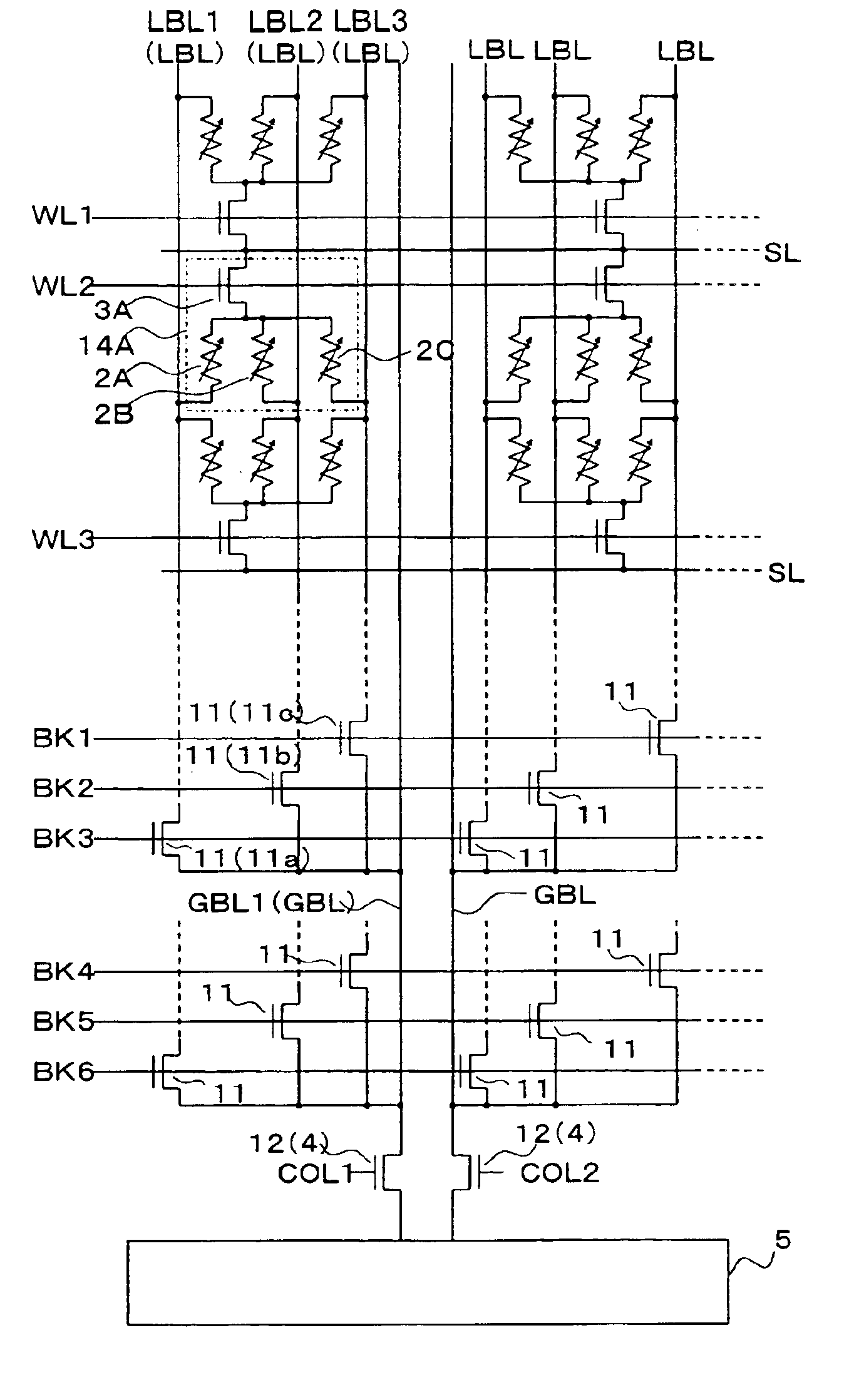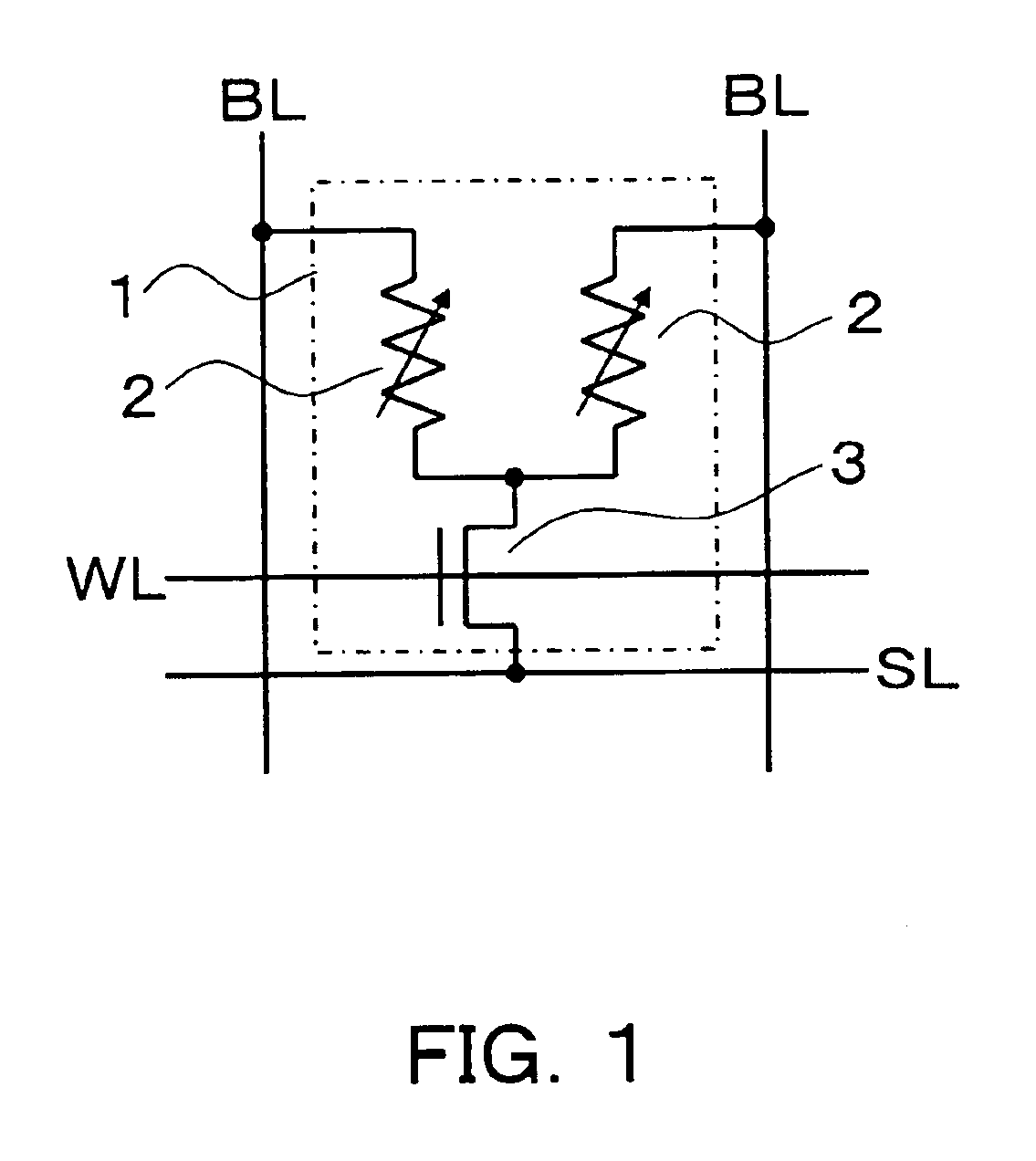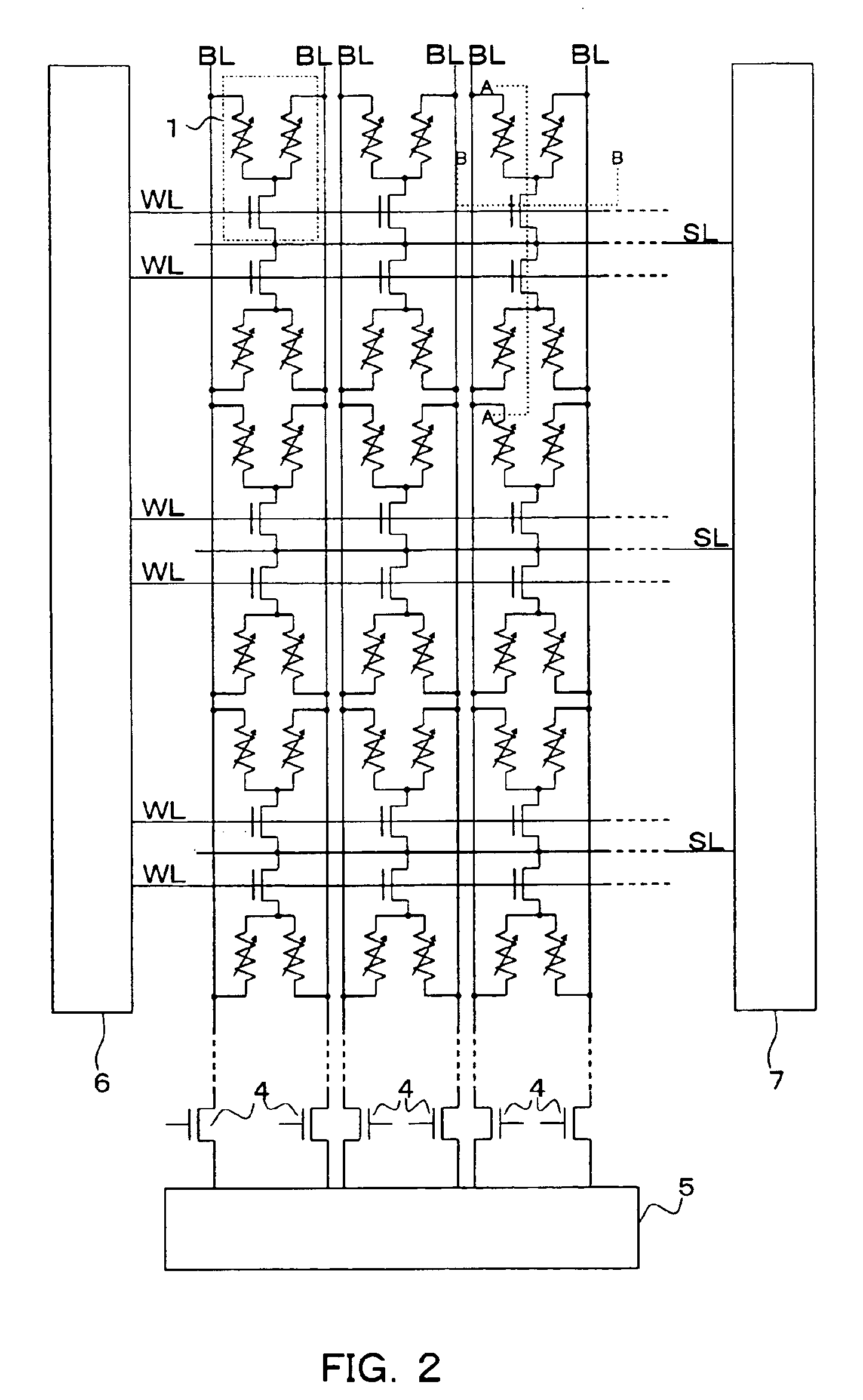Nonvolatile memory cell and nonvolatile semiconductor memory device
- Summary
- Abstract
- Description
- Claims
- Application Information
AI Technical Summary
Benefits of technology
Problems solved by technology
Method used
Image
Examples
first embodiment
(First Embodiment)
[0048]FIG. 1 shows a configuration of a memory cell 1 of the present invention device. The memory cell 1 has a selection transistor 3 constituted by two variable resistive elements 2 and one N-type MOSFET serving as a selection element for selecting the two variable resistive elements, in which one end of each variable resistive element 2 is connected to the drain electrode of the selection transistor 3. Moreover, other ends of variable resistive elements 2 are connected to different bit lines BL respectively, the gate of the selection transistor 3 are connected to word line WL and the source of the selection transistor 3 is connected to a source line SL. In the case of this embodiment, because one memory cell includes two variable resistive elements 2, there is a memory capacity two times larger than the memory capacity of the conventional memory cell shown in FIG. 17. However, when relating one memory cell to one variable resistive element 2, it can be said that ...
second embodiment
(Second Embodiment)
[0052]FIG. 4 shows a memory array configuration using a hierarchical bit line structure on the basis of the memory array configuration shown in FIG. 2 and FIG. 5 shows a reading circuit in the hierarchical bit line structure. To realize stable reading of stored data from a memory cell 1 at a high speed and stability, it is possible to realize a memory array configuration having the hierarchical bit line structure shown in FIG. 4.
[0053]In the case of the hierarchical bit line structure of this embodiment, a bit line directly connected to the memory cell 1 is referred to as a local bit line LBL. A plurality of blocks is arranged in the column direction by assuming memory arrays connected the same local bit line LBL in the column direction as one block, a local bit line selection transistor 11 for selecting the local bit line LBL of each block is set, and the local bit line LBL is connected to a global bit line GBL through the local bit line selection transistor 11. ...
third embodiment
(Third Embodiment)
[0057]FIG. 7 shows a third embodiment of the present invention. The third embodiment is different from the second embodiment in that a transistor 13 for equalizing potentials of a pair of local bit lines LBL1 and LBL2 is connected to the local bit lines LBL1 and LBL2 connected to the same memory cell 1. As shown by the signal timing waveform diagram in FIG. 8, the local bit line selection signal BK2 is temporarily made high-level during the charge period in the case of the second embodiment. In the case of the third embodiment, however, the local bit line selection signal BK2 is kept at low level and instead, an equalizing signal EQ1 is made high-level during the charge period and an equalizing transistor 13 is turned on to charge the local bit line LBL2. Though only a method for charging a pair of local bit lines LBL1 and LBL2 is different, other operations are the same as the case of the second embodiment.
PUM
 Login to View More
Login to View More Abstract
Description
Claims
Application Information
 Login to View More
Login to View More - R&D
- Intellectual Property
- Life Sciences
- Materials
- Tech Scout
- Unparalleled Data Quality
- Higher Quality Content
- 60% Fewer Hallucinations
Browse by: Latest US Patents, China's latest patents, Technical Efficacy Thesaurus, Application Domain, Technology Topic, Popular Technical Reports.
© 2025 PatSnap. All rights reserved.Legal|Privacy policy|Modern Slavery Act Transparency Statement|Sitemap|About US| Contact US: help@patsnap.com



